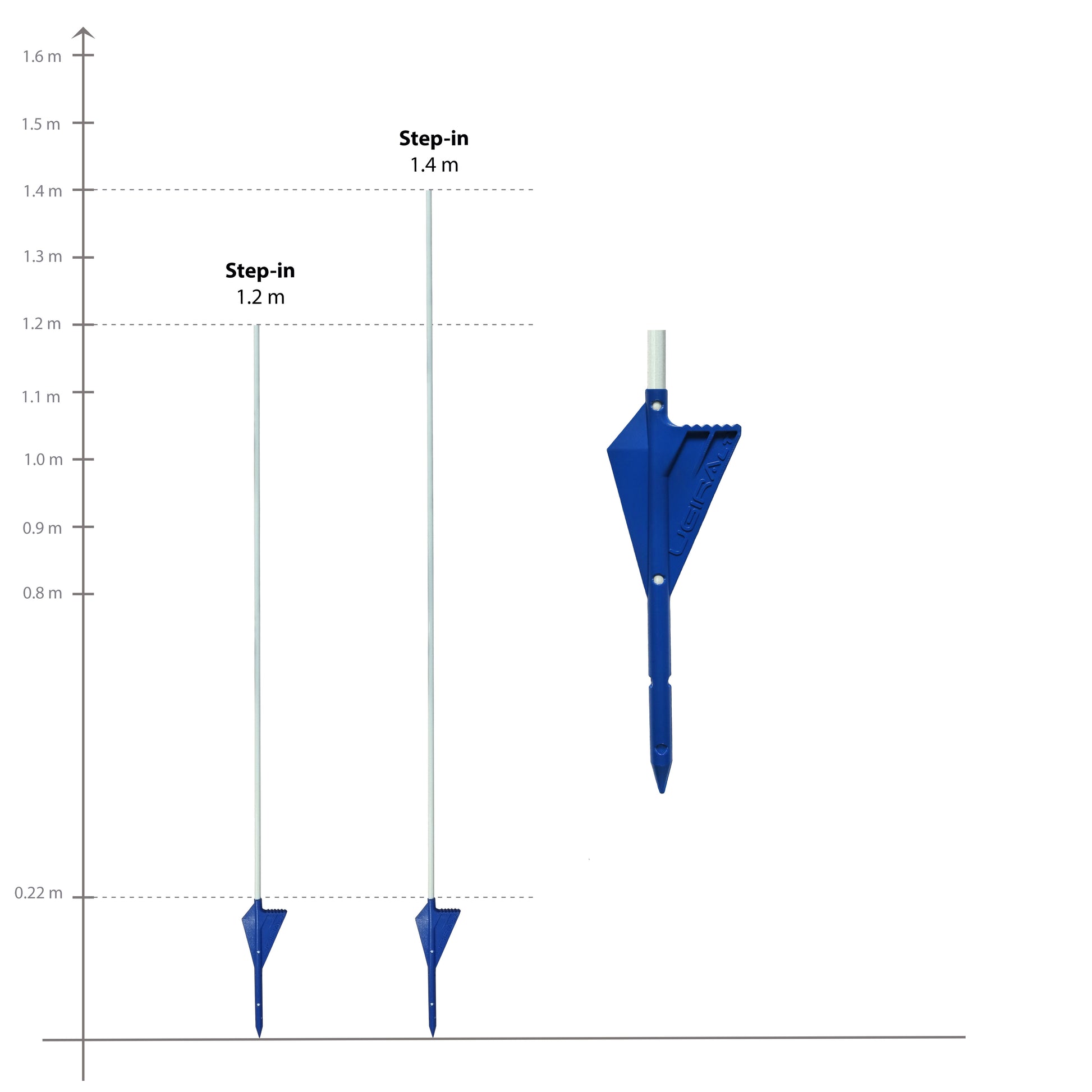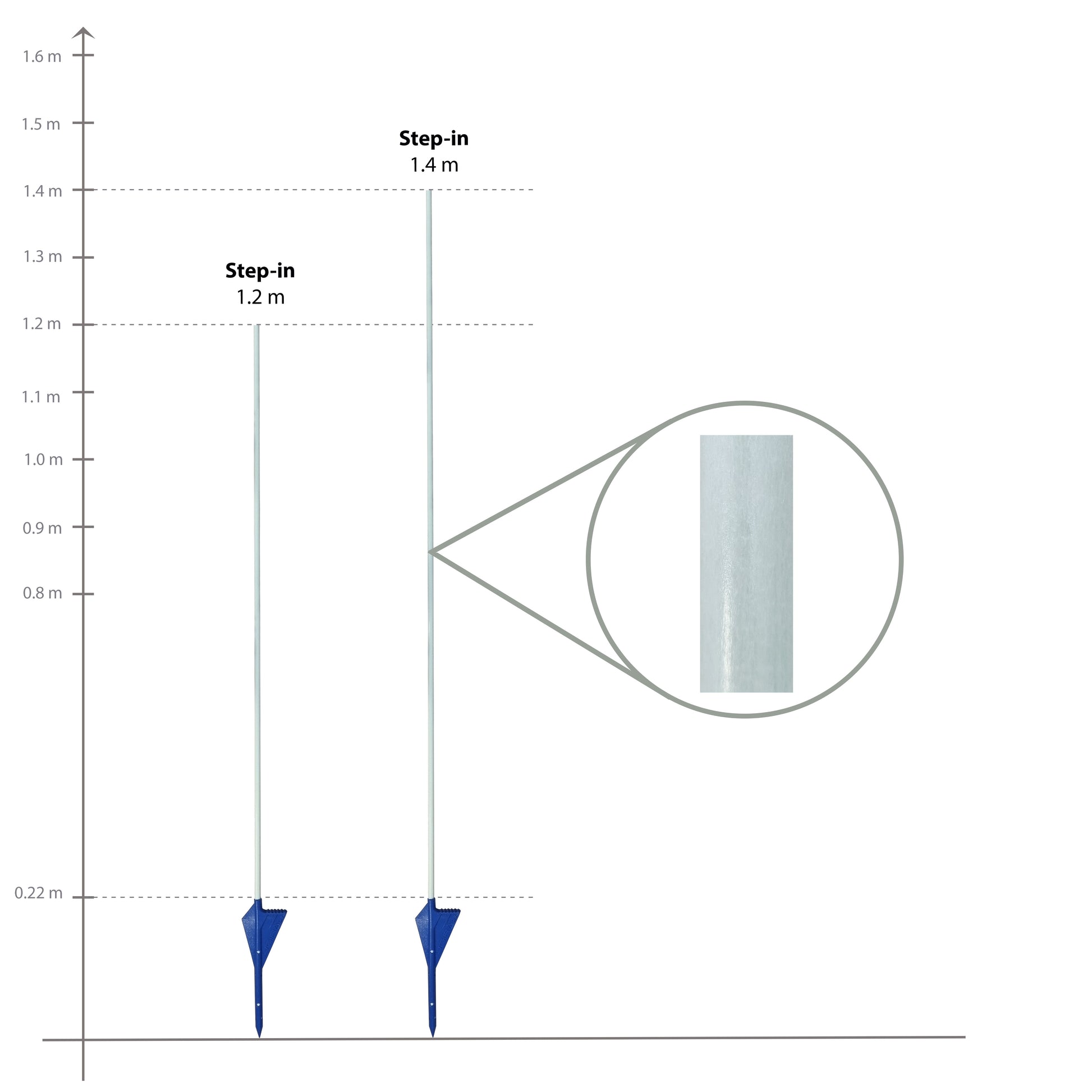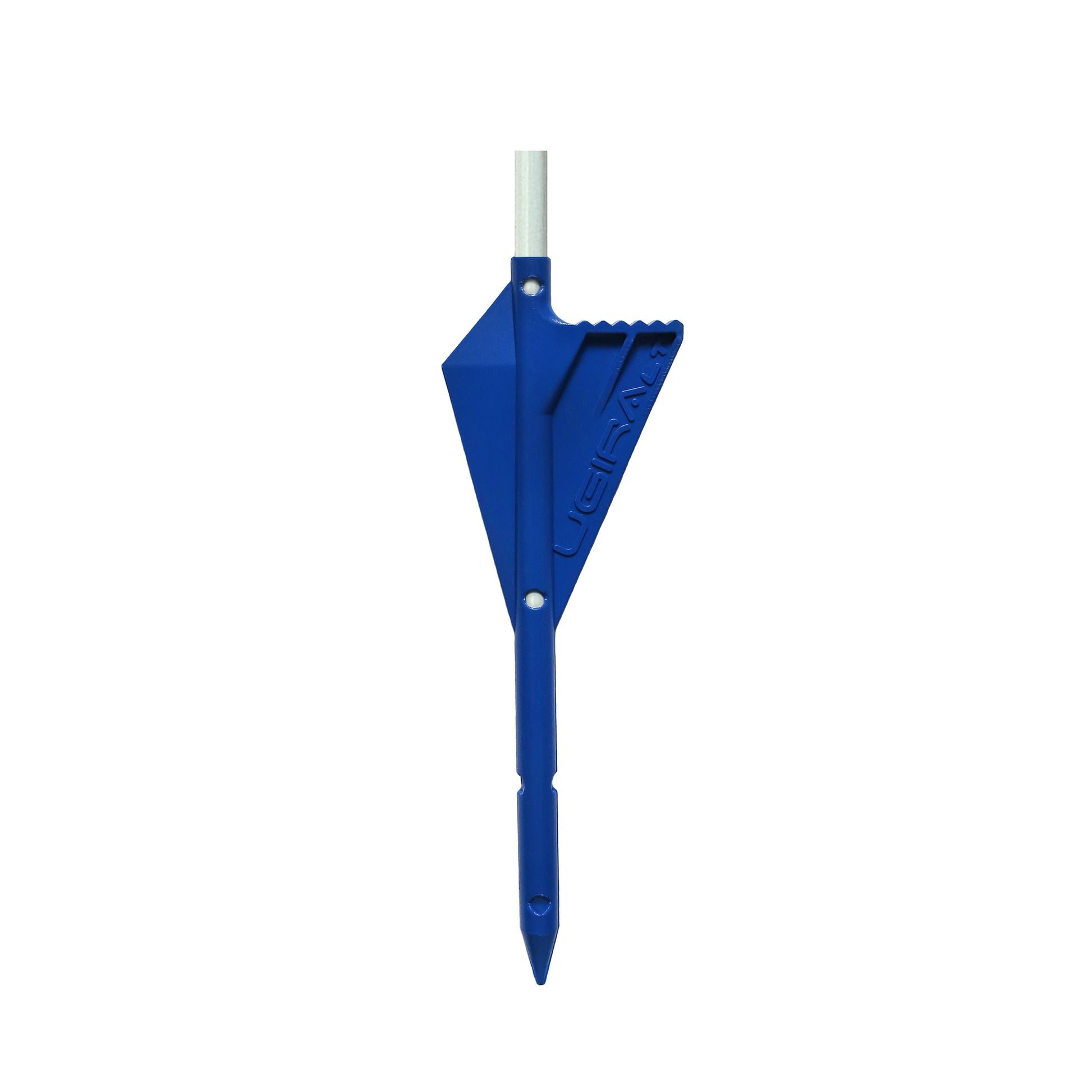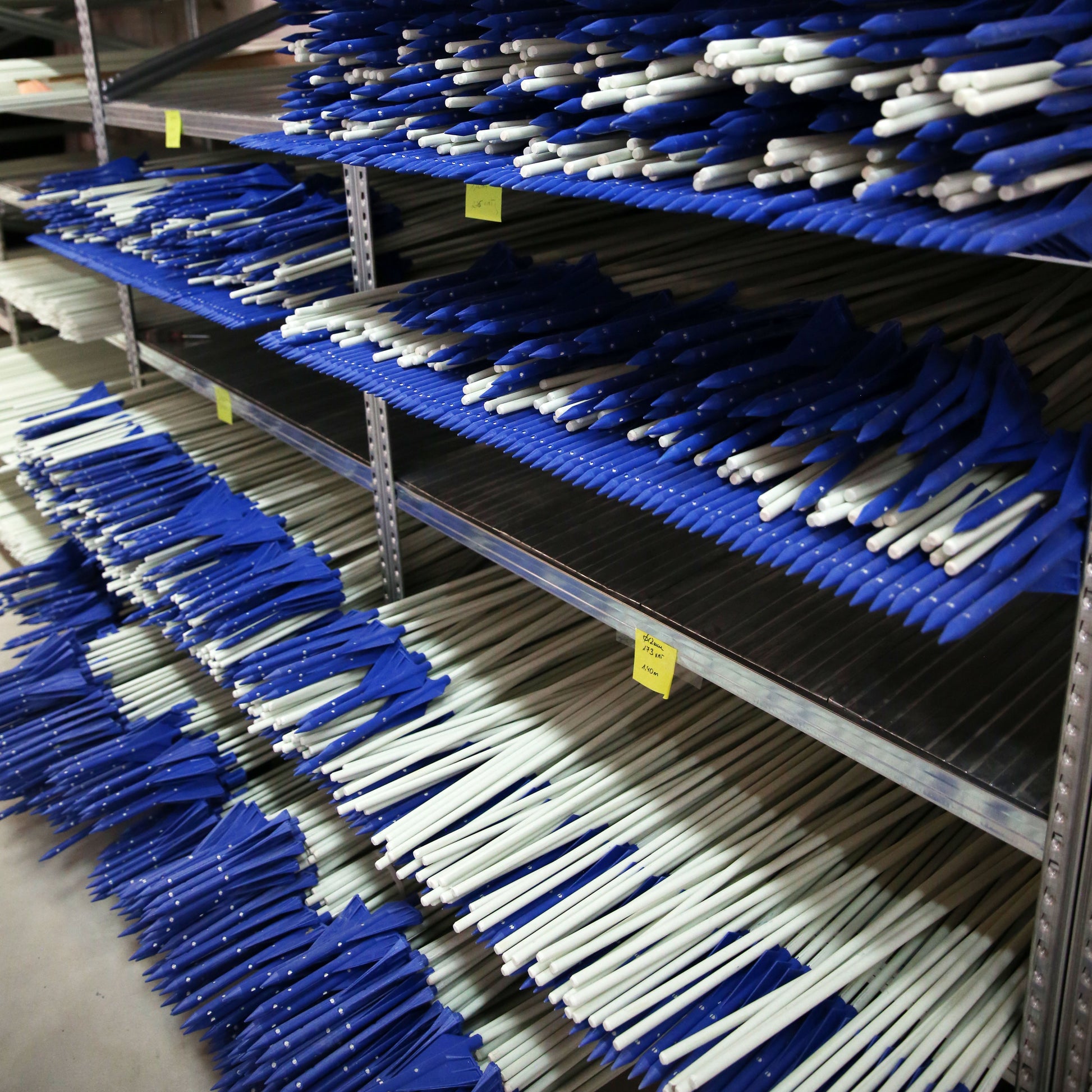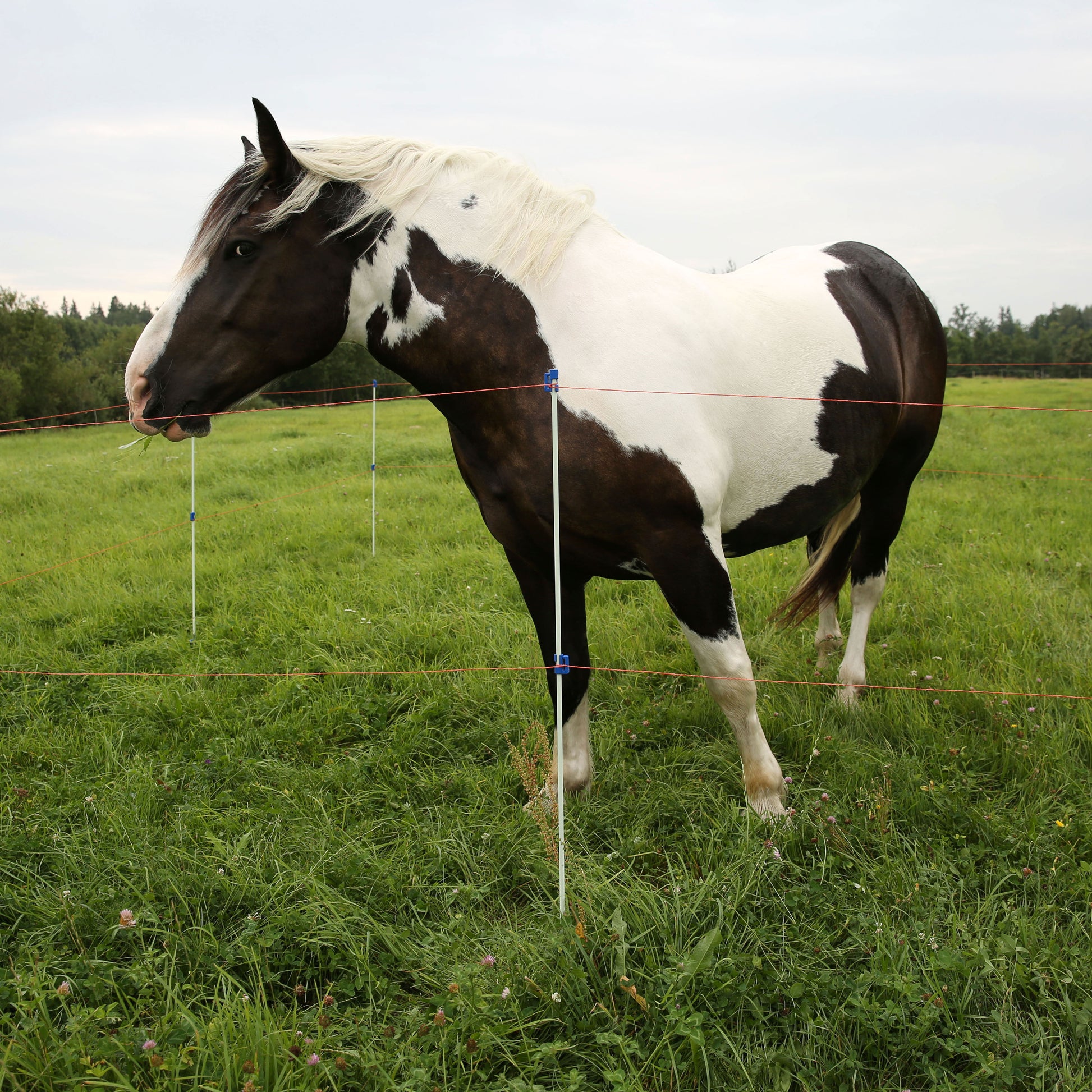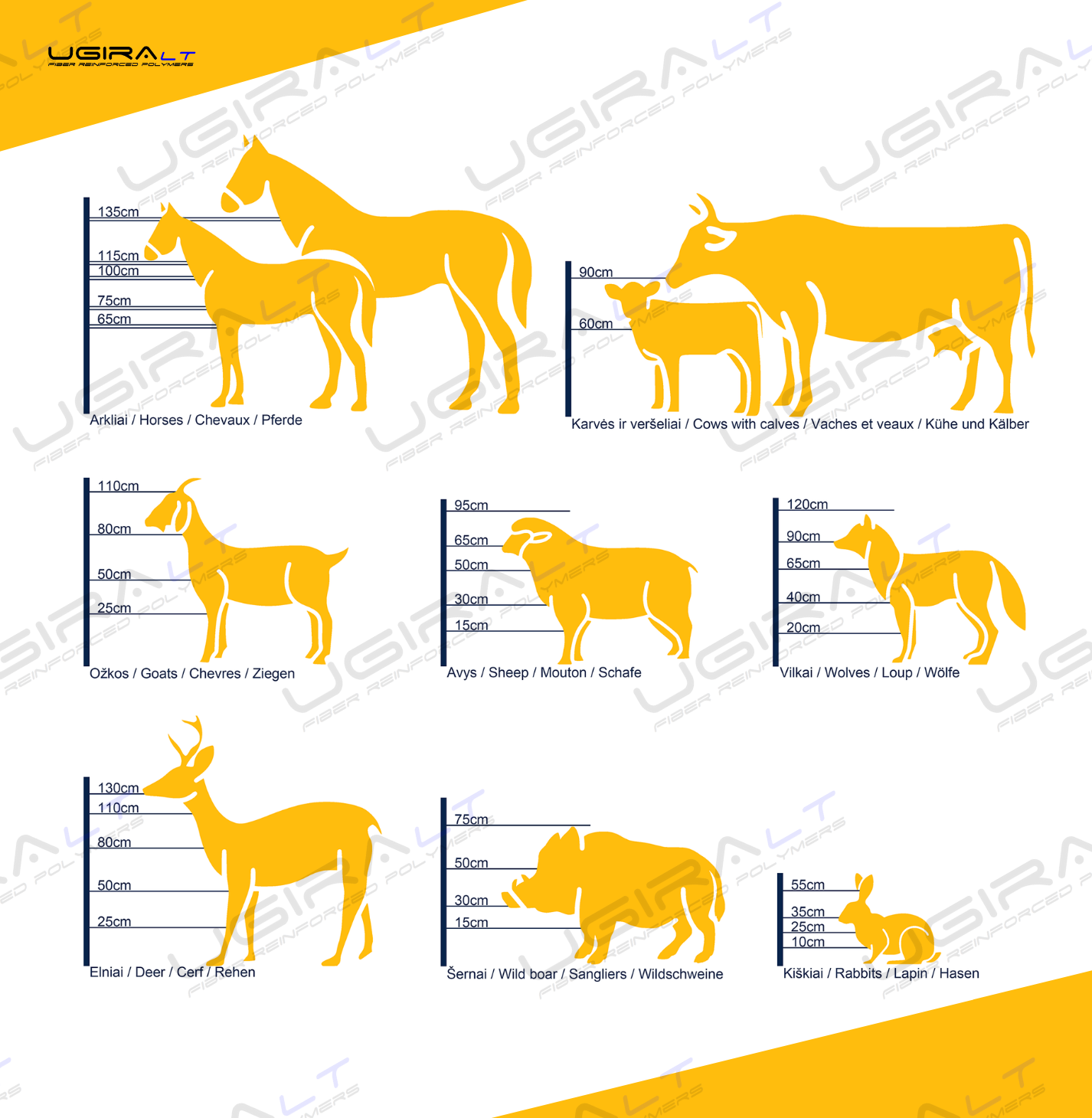Ugira LT
Fiberglaspfähle für Elektroumzäunung mit Fußstütze
Fiberglaspfähle für Elektroumzäunung mit Fußstütze
Verfügbarkeit für Abholungen konnte nicht geladen werden
WAS IST ES?
WAS IST ES?
Eine ausgezeichnete Wahl für die Installation von mobilen und stationären Elektroumzäunungen.
Länge: optional 120 cm (100 cm über dem Boden) oder 140 cm (120 cm über dem Boden).
Durchmesser: 10 mm oder 12 mm
Farbe: weiß und blau
Material: Glasfaser + Kunststoff-Fußstütze
MEHR INFO
MEHR INFO
- Keine Erweichung durch Hitze und keine Versprödung durch Kälte.
- Robust, Leicht, Elektrisch nicht leitfähig.
- Hergestellt aus hochwertigen Rohstoffen, die nicht splittern oder delaminieren.
- Under load flexes without weakening and springs back to original position.
- Einfach zu installierende und äußerst anpassungsfähige Pfosten, die zur Bekämpfung aller Haus- und Wildtiere verwendet werden können.
- UV-stabilisiert.
LIEFERUNG
LIEFERUNG
Die Lieferung der Ware erfolgt mit DPD Kurierdiensten.
Lieferzeit: 3-10 Werktage.
Es besteht die Möglichkeit, Ihre Bestellung abzuholen in: Varpo str. 43, Šunskai, Marijampolė mun.Aktie
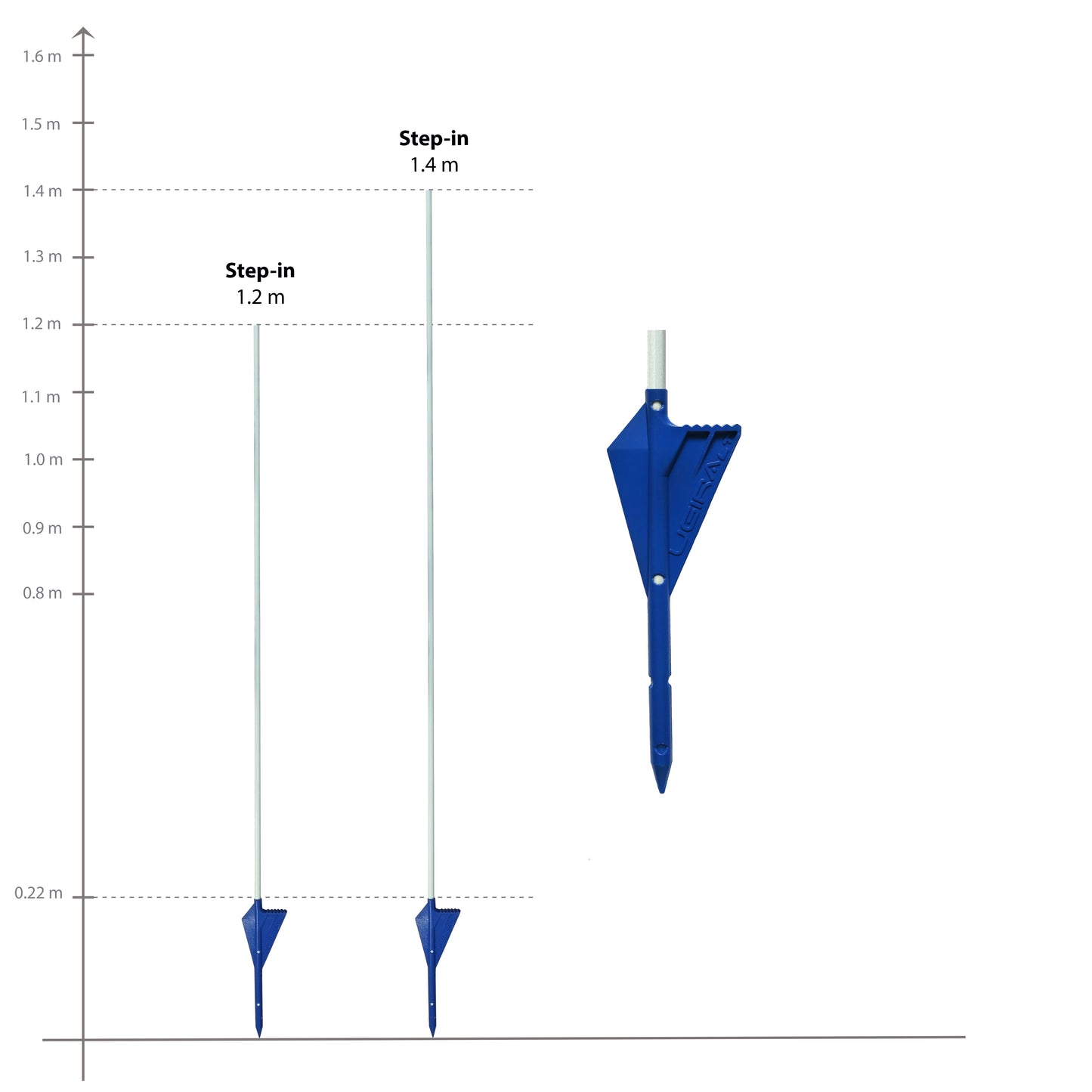
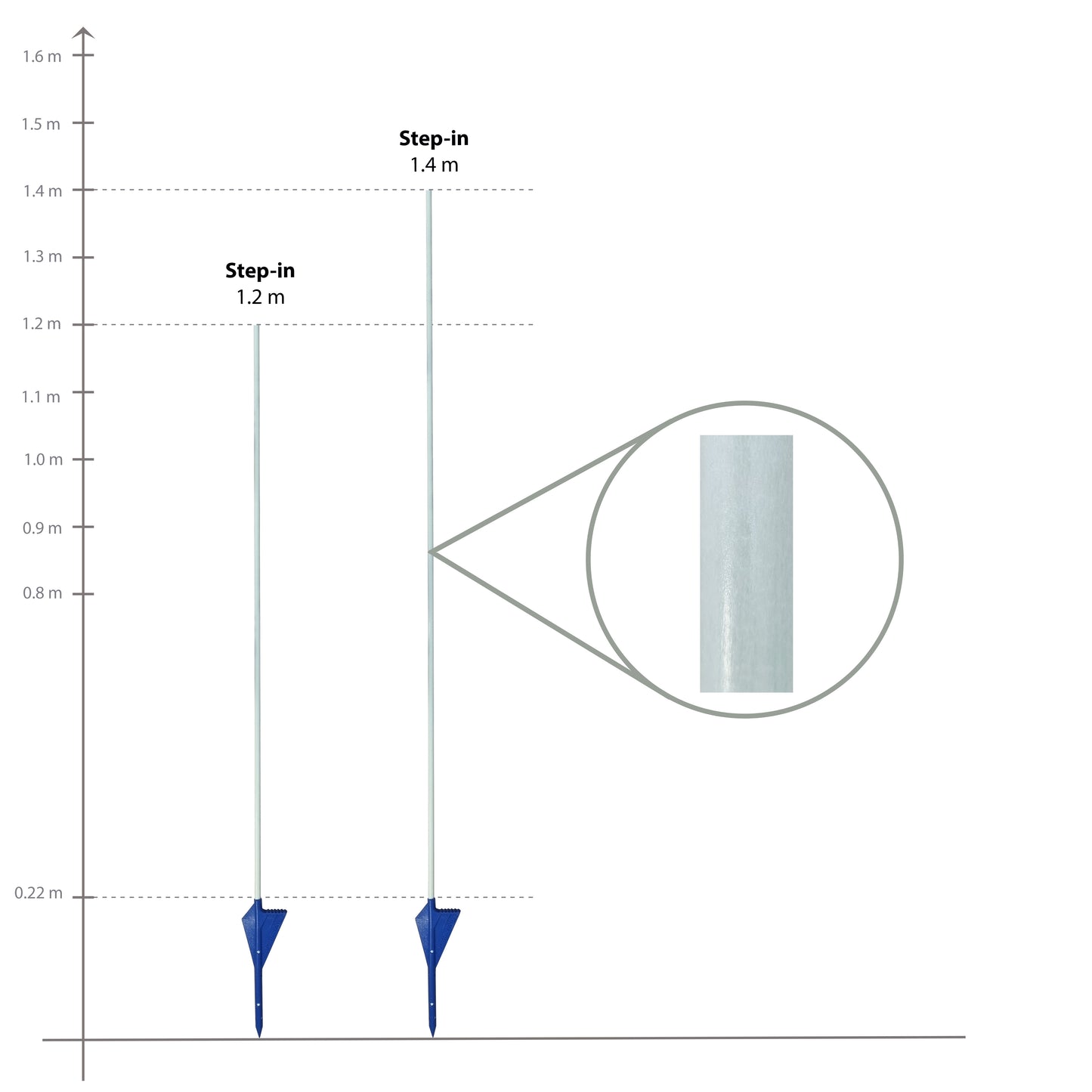
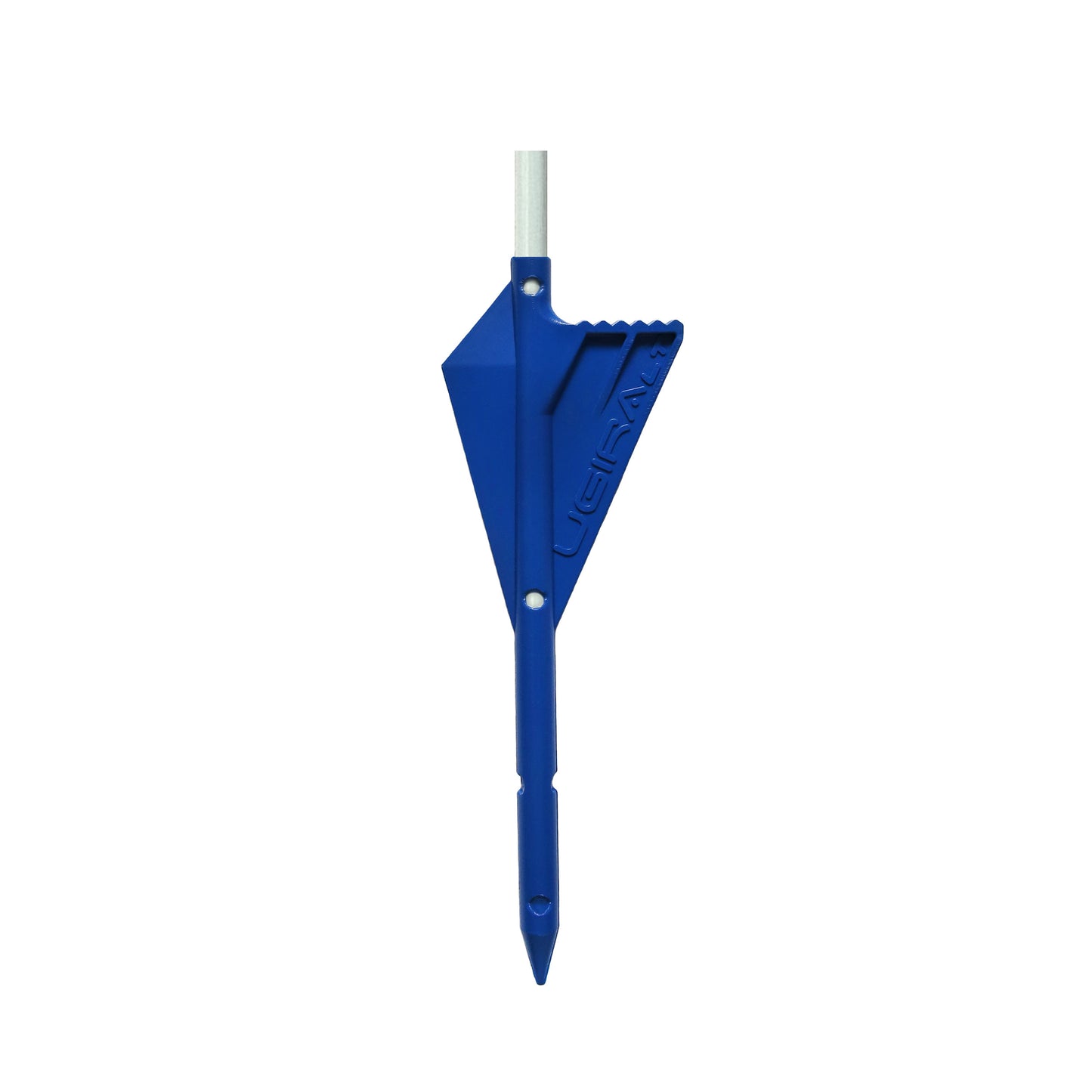
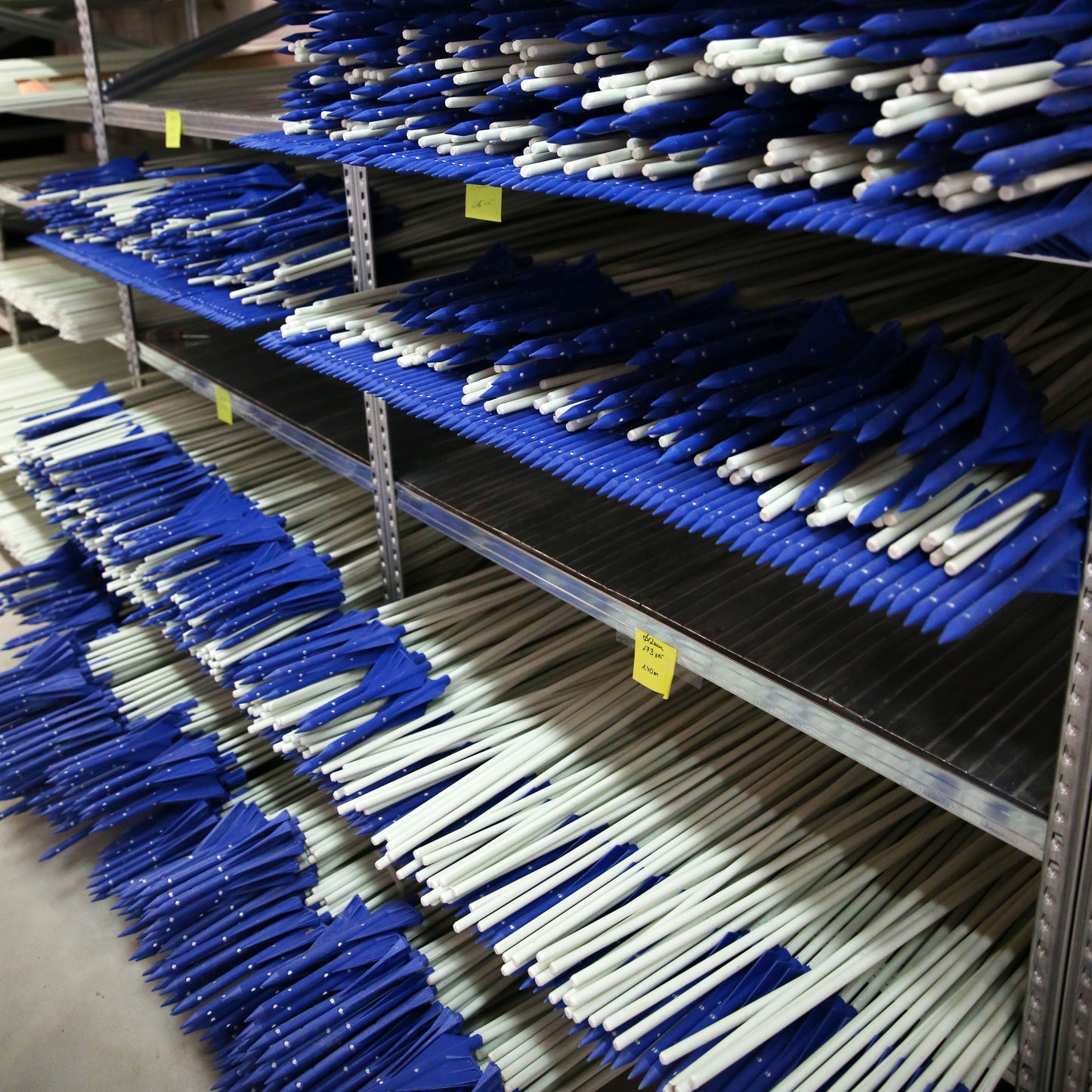
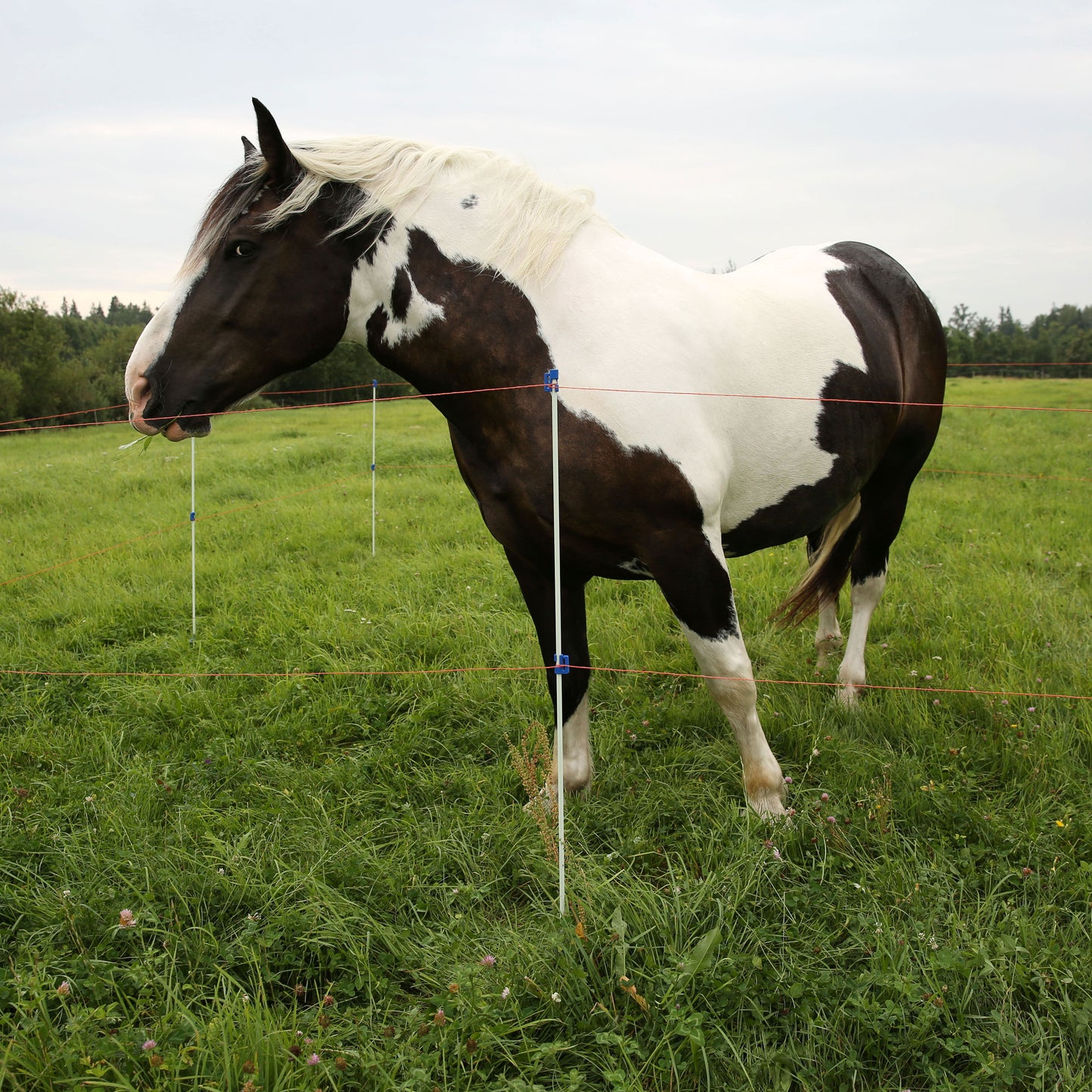
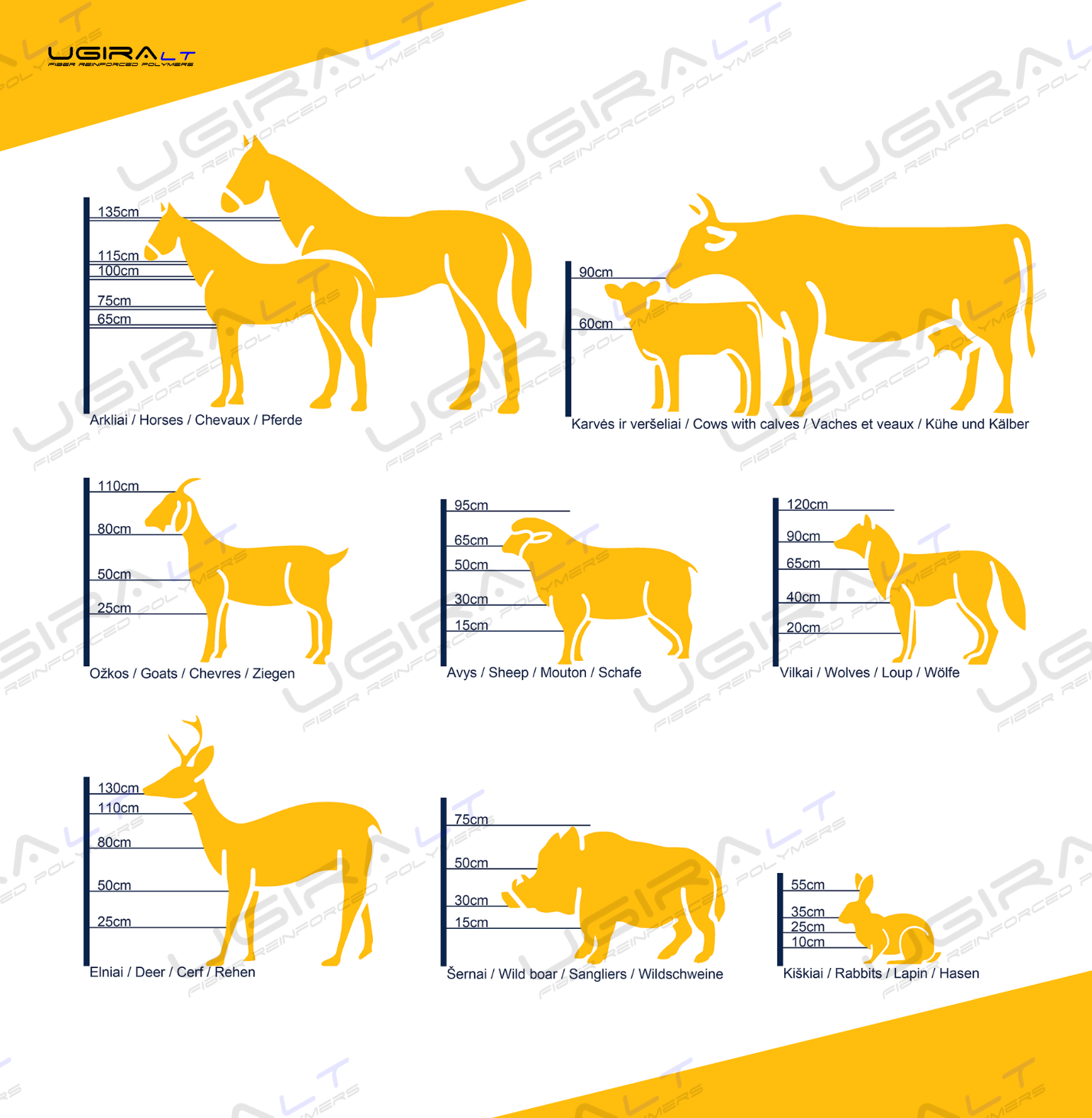
Technische Eigenschaften der Pfostenstange
|
Typ |
Geriffelte |
Kalibriert |
||||
|
Nenndurchmesser |
8 ± 0,5 mm |
10 ± 0,5 mm |
12 ± 0,5 mm |
16 ± 0,5 mm |
10 mm |
12 mm |
|
Maximaldurchmesser |
9 ± 0,5 mm |
11 ± 0,5 mm |
13,5 ± 0,5 mm |
17,7 ± 0,5 mm |
10 mm |
12 mm |
|
Mindestdurchmesser |
7 ± 0,5 mm |
9 ± 0,5 mm |
11 ± 0,5 mm |
15 ± 0,5 mm |
10 mm |
12 mm |
|
Gewicht pro Meter |
95 g ± 5% |
145 g ± 5% |
205 g ± 5% |
405 g ± 5% |
154 g ± 5% |
220 g ± 5% |
|
Dichte |
2,05 mm2 |
|||||
|
Zusammensetzung |
Fiberglas und polymeres duroplastisches Harz mit speziellen Additiven |
|||||
|
Elektrische Leitfähigkeit |
Nicht leitfähig |
|||||
|
Beständigkeit gegen UV-Strahlen |
UV-stabilisiert* |
|||||
|
Betriebstemperatur |
≤ 70 0C |
|||||
* Gemäß der im Ugira LT-Labor unter beschleunigten Bedingungen durchgeführten Studie wurden nach der Testzeit, die unter realen Bedingungen 15 Jahren entspricht, weder optische noch mechanische Veränderungen beobachtet.
Technische Eigenschaften von Pfostenteilen aus Kunststoff
|
|
Kunststoff-Fußstütze |
Hintere Halterung Ugira LT |
Mittlere Halterung Ugira LT |
ISOBLOC Halterung |
|||
|
|
für Pfähle mit 10 mm Durchmesser |
für Pfähle mit 12 mm Durchmesser |
für Pfähle mit 10 mm Durchmesser |
für Pfähle mit 12 mm Durchmesser |
für Pfähle mit 10 mm Durchmesser |
für Pfähle mit 12 mm Durchmesser |
|
|
Zusammensetzung |
PA6 |
PA6 |
TPO |
TPO |
TPO |
TPO |
NA |
|
Gewicht |
35 g |
40 g |
7 g |
12,4 g |
5,8 g |
10,1 g |
202 g |
|
Elektrische Leitfähigkeit |
Nicht leitfähig |
||||||
|
Beständigkeit gegen UV-Strahlen |
UV-stabilisiert |
||||||
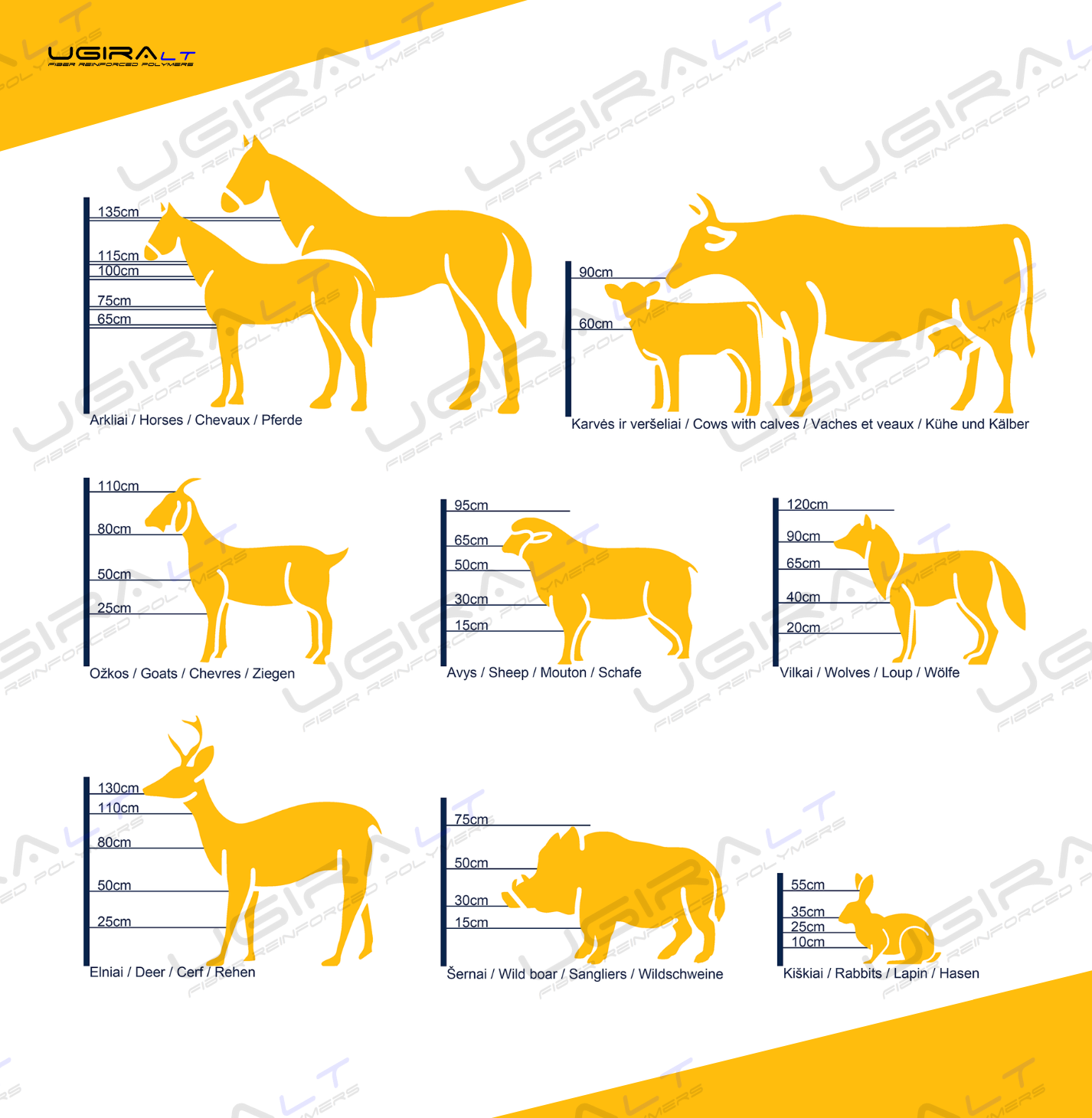
EMPFOHLENE HÖHEN
Wir können Pfosten in Ihrer gewünschten Länge herstellen. Um Ihnen die Auswahl der richtigen zu erleichtern, zeigen die Grafiken die Draht- und Bandhöhen, die Landwirte normalerweise in Abhängigkeit von den Tieren wählen, die sie einschließen oder vor denen sie sich schützen möchten.
In der folgenden Tabelle listen wir die Durchmesser der Stützen auf, die wir in Abhängigkeit von der Stützenlänge empfehlen.Empfohlene Höhen
|
Die Höhe des Pfahls über dem Boden |
Gesamtlänge des Pfahls für Kanten |
Gesamtlänge des Pfahls für Ecken |
Empfohlener Durchmesser des Pfahls für Kanten |
Empfohlener Durchmesser des Pfahls für Ecken |
Am häufigsten werden Tiere, Wildtiere umzäunt |
|
1,40 m |
1,60 m |
1,70 m |
12 mm, 16 mm |
16 mm |
Pferde, Rehe |
|
1,30 m |
1,50 m |
1,60 m |
12 mm, 16 mm |
16 mm |
|
|
1,20 m |
1,40 m |
1,50 m |
12 mm |
16 mm |
Wölfe |
|
1,10 m |
1,30 m |
1,40 m |
10 mm, 12 mm |
12 mm, 16 mm |
Ziegen |
|
1,00 m |
1,20 m |
1,30 m |
10 mm |
12 mm, 16 mm |
Rinder, Kühe, Schafe |
|
0,90 m |
1,10 m |
1,20 m |
10 mm |
12 mm |
|
|
0,80 m |
1,00 m |
1,10 m |
8 mm, 10 mm |
12 mm |
Wildschweine |
|
0,60 m |
0,80 m |
0,90 m |
8 mm, 10 mm |
10 mm, 12 mm |
Hasen, Otter |
Die Gesamtlänge des Pfahls für die Kanten wird in der Tabelle angegeben, wobei davon ausgegangen wird, dass der Pfahl 20 cm und der Pfahl für die Ecken 30 cm tief in den Boden gerammt wird. Wie tief der Pfahl gerammt werden sollte, sollte anhand der Härte des Bodens geschätzt werden. Der Pfahl für die Kanten wird normalerweise 15-30 cm tief und derjenige für die Ecken 25-40 cm tief in den Boden gerammt.

